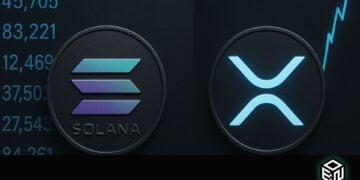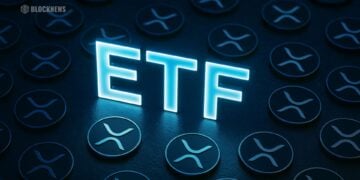- Arbitrum solves Ethereum’s scaling limits with Optimistic Rollups and already leads L2 adoption.
- Upcoming upgrades (Stylus, Orbit, sequencer decentralization) expand its utility and trust model.
- ARB’s price is still ~80% below 2024 highs, leaving it undervalued relative to network growth.
What if the most overlooked alt in this cycle isn’t a shiny new chain at all—but the Layer-2 that already does the heavy lifting for Ethereum? That’s Arbitrum. Adoption keeps climbing, upgrades keep landing, smart money keeps building on it… and the ARB token is still sitting ~80% below its early-2024 highs. That gap—between network strength and token price—looks less like a mistake and more like a window.
This isn’t a hype dump. It’s a simple thesis: when usage outruns price long enough, something usually gives.
What Arbitrum is actually fixing
Ethereum is powerful but crowded. At ~20–40 TPS, every rush hour turns fees into a tax. Arbitrum solves the bottleneck with Optimistic Rollups: bundle lots of transactions off-chain, prove them on-chain in compressed batches, inherit Ethereum’s security, and cut costs to almost-nothing levels. You keep EVM compatibility, tooling, and the security model—without the line out the door.
And this isn’t theoretical. Arbitrum regularly posts top-tier activity across crypto: DeFi trades, NFT mints, gaming loops, staking—real flows, not just wash. Versus other L2s, it tends to lead on daily transactions, active addresses, and TVL. In plain English: if Ethereum is the city, Arbitrum is the express lane most people are already using.
The roadmap: more builders, more sovereignty, less friction
Here’s where it gets interesting. The upgrades on deck aren’t cosmetic; they expand the surface area for devs and apps:
- Stylus: smart contracts in Rust/C++ (WASM) alongside Solidity. That opens the door for systems devs who’ve never touched the EVM, and it lets teams reuse battle-tested libraries. Lower barrier, bigger talent pool.
- Arbitrum Orbit: launch your own L2 or L3 with Arbitrum’s bridges/tooling baked in—plus Stylus support. Spinning up a gaming chain or a specialized DeFi rollup stops being a six-month science project.
- Decentralizing the sequencer: today’s single sequencer is a central choke point. The roadmap points toward multi-sequencer or leader-election models (potentially tied to ARB staking) so ordering power isn’t a single switch.
- DAO muscle: Security Council elections, funding for audits (think: an 8-figure ARB pool earmarked for hardening the stack), and a steady cadence of governance that—while messy sometimes—keeps the rails moving.
All of this compounds. More languages → more devs. More sovereign rollups → more app-specific throughput. Less centralization → more credible neutrality. It’s not flashy; it scales.
Token reality: supply, unlocks, and why the chart looks heavy (until it doesn’t)
Let’s talk ARB. Totals are straightforward: 10B max supply. Roughly half already circulating; the rest vests through 2027 across DAO, team, investors, airdrops, and ecosystem grants.
Yes, unlocks matter. No, they’re not a cliff. The cadence has been regular and predictable (think: tens of millions per month, low-single-digit percent of float). Markets usually digest scheduled supply far better than shock events. If anything, the “unlock fear” has kept ARB discounted even as usage kept climbing—an overhang that fades as allocations bleed in and fundamentals keep improving.
Price? Recently living around the low-$0.50s—miles beneath the ~$2.40 spike from early 2024. If you believe in Ethereum scaling and you see Arbitrum’s lead in actual activity, that discount starts to look like asymmetry, not a warning label. Still, eyes open: this is infrastructure, not a meme. It moves slower until it suddenly doesn’t.
Is ARB worth holding into this cycle?
Short answer: if your thesis includes “Ethereum wins via rollups,” ARB belongs on the shortlist. You’re effectively buying:
- A network that already dominates L2 usage.
- A roadmap that widens the builder funnel (Stylus), multiplies sovereign deployments (Orbit), and hardens the trust model (sequencer path + audits).
- A token with known supply, predictable unlocks, and a valuation still priced like it’s 2024.
The risk set is normal for an L2: execution timelines, competition from other rollups, occasional UX friction, and macro noise. The upside is that L2s monetize real utility—not just vibes. As throughput, tooling, and sovereign rollups expand, the rails get more valuable, and rails tend to reprice in bull markets.
What to watch next (quick, not spammy)
- Stylus in the wild: real Rust/C++ contracts, not just demos.
- Orbit adoption: credible teams deploying L3s with actual users.
- Sequencer decentralization milestones: specs, testnets, timelines.
- DAO capital efficiency: audits funded, infra hardened, grants that ship.
If these keep ticking, the “network > token” disconnect closes—usually fast, sometimes violently.
Bottom line
Arbitrum isn’t the loudest room in crypto. It’s the one most people are already standing in—because the fees are low, the apps work, and the dev tools feel familiar. When an L2 keeps stacking usage while its token lags, that gap is either a trap… or a gift.
My read? With Stylus, Orbit, and a path to a decentralized sequencer, it looks a lot like a gift. Not financial advice—just the obvious: when fundamentals grind higher long enough, price eventually remembers.














